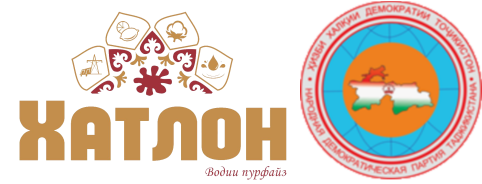
QUBODIYON A MEMORY OF OUR ANCESTORS
A brief historical information
In the past, the foundation of the cities was also referred to the kings. Just like Dorobgird, Wisagird, Siyovushgird, or Siyovakhshgird, Shopurgird, Kurushkada and so on. The ancient city of Qubodiyon, that in the course of the time, its first letter “K” (in its word) has been changed into the letter “Q”, referred to Kayon kingdom Kubod or Kaykubod. An ancient Qubodiyon is a part of the ancient history of Tajiks and according to the historical sources, the concept of Qubodiyon is dedicated to the founder of Kayoniyon dynasty, which refers to his name — Kayqubod and according to some sources, it has the history of 3500 years. Qubodiyon district is in the valley of lowland Kofarnihon and it is located in the south-western part of Tajikistan. The eastern and left part of Kofarnihon river is at an elevation of 788 meters above the sea level. The district borders in the western part with Shahrtuz, the eastern part with Jilikul and the northern part with Rudaki districts.
Attractive travelling areas
Qubodiyon has the unique historical areas attractive for the tourists to explore, such as: Qal’ai Mir, Qayqubodshoh, Takhti Sangin, Takhti Qubod, Shohteppa, Khushdormullo (Ushturmullo), Kuhandij, Khoja Salim mosque and all these are an evidence of several thousand years of the history of this ancient valley. Indeed, Qubodiyon is considered one of the ancient districts of Tajiks and the cradle of their culture. In the ancient district of Qubodiyon, there are eight historical monuments, which have the republican value and belong to IV-V centuries AD and VI century BC. One of the reasons behind the historiographers’ interest in Takhti Sangin, was the acquisition of “Amu Darya Treasury” from this location. The above-mentioned treasury is the evidence of the development level of artistic skills of that period and the basis of that collection, which dates to the IV-VI centuries BC, consists of the acquisitions found from Hakhomanishiyon period in the north of Bokhtar.
Infrastructure service
There are 3 urban cultural centers, 3 rural cultural centers, 1 Culture Palace, 1 central library, 11 rural libraries, children’s art school and the talents’ groups “Ghuncha” and “Shabcharogh”, which provide the public cultural services in the district. At the same time, there are three big markets of people’s essential items, two markets of construction materials, two hotels and several canteens serve the people, within the district. There are 63 educational institutions (secondary schools), 1 lyceum of Gifted Children and 6 preschool institutions (primary schools), active in the district. The district inhabitants are mainly engaged in agricultural activities, which include planting cotton, sowing cereals, viticulture, horticulture and so on. There are some people, who are engaged in the field of animal husbandry too.
The particularities of the district
The district is a native land of one of the most outstanding figures of Persian – Tajik literature, a philosopher and a great erudite – Nosiri Khusravi Qubodiyoni, whose birthplace has become a saint place of the word’s men of letters. The most ancient historical area in Central Asia – Takhti Sangin (the stone throne), the Aryan kingdom (imperial) seat, located in the district, which is the evidence of the honorable history of Tajik nation.
Добавить комментарий Отменить ответ
Для отправки комментария вам необходимо авторизоваться.
Ҷустуҷӯ
Хабарҳои охирин
- Program of the International Tourism Forum and Exhibition «Welcome to Ancient Khatlon» 20.02.2024
- ФОРУМ ВА НАМОИШГОҲИ БАЙНАЛМИЛАЛИИ САЙЁҲИИ МАРҲАБО БА ХАТЛОНИ БОСТОН TOURISM FORUM AND EXHIBITION WELCOME TO ANCIENT KHATLON 20.02.2024
- Натиҷагирии фаъолияти Кумитаи рушди сайёҳӣ дар соли 2023 ва вазифаҳо барои соли 2024 09.01.2024
- Achievements of the tourism sector of the Khatlon region 18.12.2023
- Мақбараи Мавлоно Қутбиддини Нишопурӣ/Мавзолей Мавлоно Кутбиддина Нишопури/Mausoleum of Mavlono Qutbuddin Nishopuri 04.12.2023
Хазина
- Февраль 2024 (2)
- Январь 2024 (1)
- Декабрь 2023 (2)
- Ноябрь 2023 (5)
- Октябрь 2023 (9)
- Сентябрь 2023 (7)
- Август 2023 (2)
- Июль 2023 (13)
- Май 2023 (5)
- Апрель 2023 (1)
- Март 2023 (30)
- Февраль 2023 (21)
- Январь 2023 (16)
- Декабрь 2022 (8)
- Ноябрь 2022 (7)
- Август 2022 (9)
- Июль 2022 (4)
- Апрель 2021 (11)
- Март 2021 (8)
- Июль 2020 (4)
- Июнь 2020 (6)
- Апрель 2020 (2)
- Март 2020 (2)
- Февраль 2020 (2)
- Январь 2020 (2)
- Октябрь 2019 (3)
- Июль 2019 (3)
- Июнь 2019 (6)
- Май 2019 (3)
